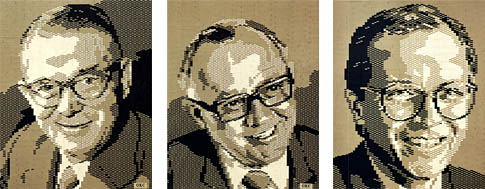The Kirk Christiansens
What began as a means for a nearly bankrupt Danish carpenter to make a living during the Depression has, over the last 75 years, grown into one of the largest toy companies in the world; the fifth largest in 2007, and by far the largest in Europe.1 1. Here is the current list: 1. Mattel, US, 2. Hasbro, US, 3. Bandai, Japan, 4. MGA Entertainment, US, and 5. Lego, Denmark. When Ole Kirk Christiansen began making wooden toys in 1932 he had seven or eight employees and sold his wooden goods and toys to local farmers. Today Lego employs more than 5000 people worldwide and sells its toys in more than 130 countries.2 2. At its peak in 1997 Lego had about 9500 worldwide employees. After the 2004 financial restructuring, and the resulting manufacturing outsourcing, employment dropped as low as 4200 in 2007. According to the 2008 Annual Report, there are currently 5388 employees. See: Lego Corporate Communications. Annual Report 08. Billund: The Lego Group, 6 Feb 2009.
Since the introduction of the modern interlocking brick in 1958, Lego has produced more than 400 billion bricks (or 62 bricks for every person on Earth), and over four billion minifigures. This year they will manufacture 19 billion bricks (36,000 bricks per minute) and will sell more than two million sets (seven sets per second). It is estimated that more than 400 million children and adults will play with Lego this year and that collectively they will spend more than five billion (with a b) hours with the toy.3 3. Most of this information comes from Legos’s Facts and Figures publications (now known as the Company Profile). See: Lego Corporate Communications. Company Profile: an Introduction to the LEGO Group 2007. Billund: The Lego Group, 2007.
The company has survived global depressions, a World War, the TV age and the digital age. It has survived the onslaught of American toy conglomerates, and later, cheap Pacific Rim imitators. It is still among the most popular toys for boys ages 7―14, and accounts for 3.6% of all toy purchases.
The open-ended, creative nature of the toy has been universally praised among educators and child development specialists. It is so highly regarded that it has twice been named the “Toy of the Century.”4 4. Lego was voted Toy of the Century first by Forbes Magazine and several months later by the British Toy Retailers Association. In general Lego has, over the years, won about every toy award possible, many more than once.
What is perhaps most suprising is that the company has been owned, and until very recently, completely run by three generations of a single family — the Kirk Christiansens of Billund, Denmark. So the story of Lego is the story of the family.
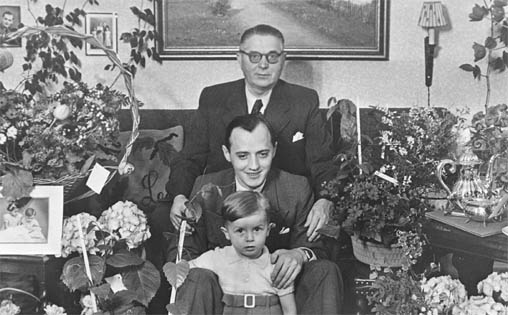
Tre Generationer Stor – Three generations of the Kirk Christiansens
Ole Kirk Christiansen
Ole Kirk Christiansen (or OKC as he was later known within the company) was born 7 April 1891 in Filskov, a small village in the farming and dairy country of central Jutland. As one of 10 children in a poor family he was put to work as soon as possible. By the age of six he was tending the family’s livestock. Later he attended school two days a week learning to read and write, and after his confirmation at age 14, he was apprenticed to his older brother, Kristian Bonde Christiansen, who was a carpenter. After completing his apprenticeship he worked in Germany from 1911—1912 and Norway from 1912—1916.
Ole returned to Billund at the age of 25 and, with his savings from working abroad, he bought the local woodworking shop where he began his carpentry work and later his toy business. Around 1916 he married Kirstine Sörensen, whom he met while in Norway, and they had 4 children: Johannes (b.1917), Karl Georg (1919), Godtfred (8 Jul 1920) and Gerhardt (1926). Kirstine died in 1932, leaving OKC to look after the children. Two years later he married Sofie Jörgensen and they had a daughter, Ulla (1935).
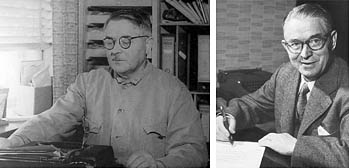
For most of Ole's life the company barely managed to stay in business. More often than not he was on the verge of bankruptcy. The fact that the company survived a global depression and a World War in rural Denmark was a testament to Ole's strength and determination. Ole attributed this to his devout Lutheran faith, but it was more than just that ― it was Ole’s vision (and perhaps obstinacy) that allowed the company to grow against these odds.
Early on Ole involved all four of his sons in the business. By the late 1940’s Karl Georg was in charge of plastics production, Gerhardt was in charge of wood manufacturing and Johannes was responsible for truck deliveries. And Godtfred? He was well on his way to managing the company. He began working in the company when he was 12, by the age of 17 he was designing models and by age 24 he was his father’s right hand man.
Godtfred Kirk Christiansen
Godtfred was named Junior Vice President on his 30th birthday in 1950. The next year Ole suffered a stroke and Godtfred progressively assumed more of the management responsibilities as Ole’s heath declined. Godtfred became managing director in 1957 and chairman in 1958 after Ole died. After Godtfred became chairman disagreements with the rest of the family lead him to buy out his brothers’ interests in the company and in 1961 he became the sole owner.
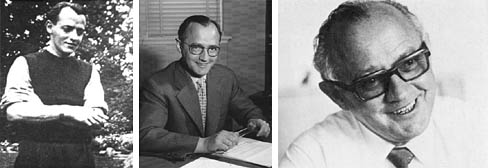
Godtfred (or simply GKC) and his wife Edith had three children, Gunhild, Kjeld (27 December 1947) and Hanne. Like his father, Godtfred involved the children in the business at an early age. Package designs from the late 1950’s show all three of the children with the newly-developed Town Plan. In particular, Kjeld Kirk Kristiansen (the surname spelling was a clerical error at his birth) showed promise as an imaginative builder and GKC looked to him as a source of product development.
Godtfred had, perhaps, the equivalent of a 10th grade education. He never learned a foreign language and was such a notoriously poor reader that he had his managers give oral reports, but he was also a sharp-minded businessman. He personally developed the System of Play and the Lego Brick; the two defining achievements of the company. During the late 1950’s and 1960’s he expanded the company globally by creating his own sales network: First to Western Europe, then North America, Asia, and the Middle East.
Kjeld Kirk Kristiansen
Kjeld started as a management trainee with the company’s German subsidiary in 1969 and went on to receive a B.Sc. in Economics and Business Administration from the Århus School of Business, and an MBA in 1972 from IMD in Lausanne, Switzerland. In 1973 he returned to the family enterprise as co-director of the LEGO Company’s technical R&D department and of its first foreign production plant in Switzerland. In 1979 he succeeded his father as CEO. Godtfred died 13 July 1995.
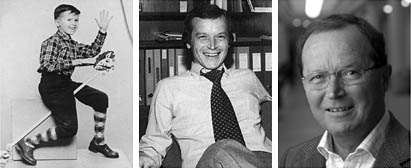
Hanne was tragically killed in a car accident in 1969 and Gunhild, who married and is now Gunhild Kirk Johansen, is co-owner (with Kjeld) of Kirkbi AG, the Swiss holding company that owns the patents and intellectual property of the Lego Group. Her husband, Mogans Johansen, sat on the Lego board of directors from 1977—2007. Kjeld married Camilla in 1974 and they have three children, Sofie (1975), Thomas (1979) and Agnetes (1982).
Not surprisingly, Kjeld brought a modern, and more formal, business perspective to the family company. He modernized the corporate structure and presided over the growth of the company into one of the largest toy companies in the world. He was also responsible for developing the concept of Lego themes — the “System within a System.”
In October 2004 Kjeld stepped down after 25 years as CEO and for only the second time in the company’s history, a non-family member, Jørgen Vig Knudstorp, was appointed to run the company.
It‘s too early to tell what role Kjeld‘s children will play in the family enterprise, but in April 2007 Thomas became a board member of both the Lego Group and Lego Holding.

